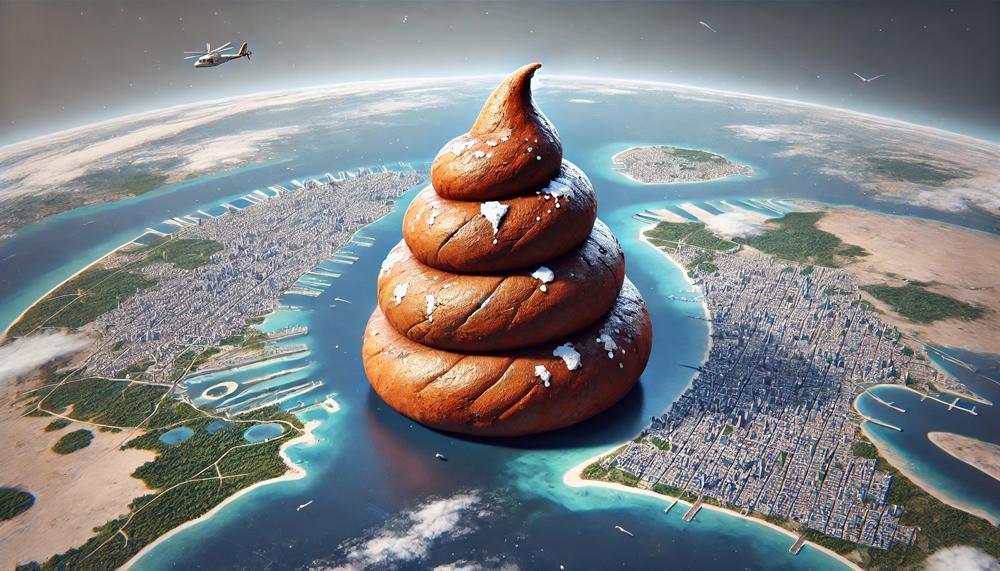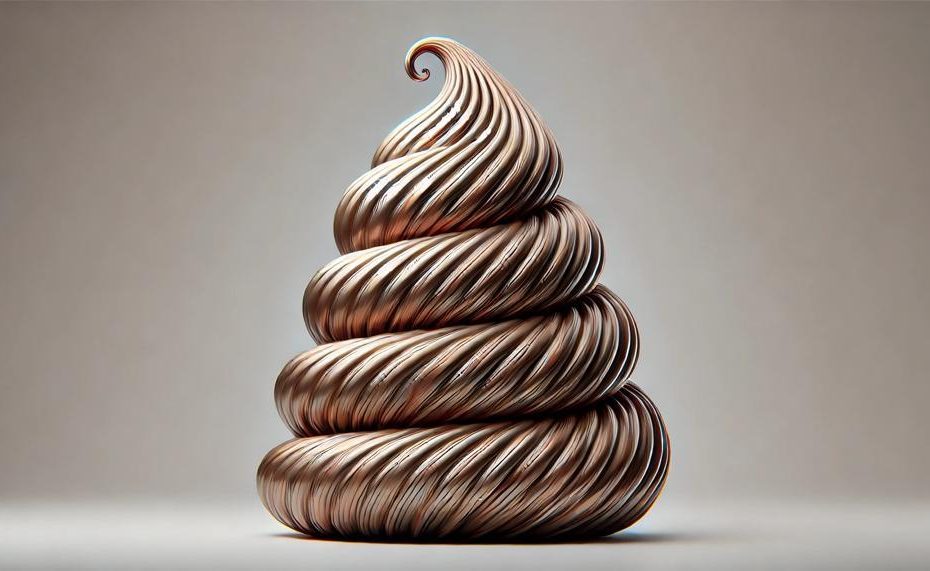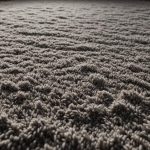Facing a poop that’s too big to flush can be an awkward and frustrating situation, but don’t worry—there are simple solutions to get things moving smoothly. The quickest way to tackle this problem is to fill a bucket with water and pour it forcefully into the toilet bowl 2-3 times. This method often generates enough force to push the poop through the pipes. Here’s a breakdown of what you can do:
- Forceful Flushing: Fill a bucket with water and pour it with force into the toilet bowl. Repeat 2-3 times if necessary.
- Identify the Cause: Understand why the poop is too large to prevent future occurrences. Common reasons include constipation, diet, or plumbing issues.
- Manual Assistance: If the initial flush doesn’t work, you may need to manually break down the poop using a plunger or other tools.
- Dissolving the Poop: Use household items like vinegar and baking soda or a commercial product to dissolve the poop before flushing.
- Hot Water Method: Pour hot (but not boiling) water into the toilet to help break down large feces.
- Call a Plumber: If all else fails, it might be time to call a professional plumber for assistance.
These methods are straightforward and can help you handle this issue without too much hassle. By understanding the underlying causes and having a few tricks up your sleeve, you can manage and prevent future toilet troubles.
Contents
Inadequate Flushing Power
Common causes of inadequate flushing power stem from a variety of issues, each with practical solutions. Below is a detailed exploration of these causes and their respective remedies:
| Cause | Description | Solution |
| Clogged Waste Pipes | Blockages in the waste pipes can significantly reduce flushing power. | Clear blockages using a plunger or a plumber’s snake. In severe cases, professional plumbing services might be needed. |
| Obstructed Siphon or Rim Jets | Mineral deposits or debris can clog these jets, affecting water flow. | Clean the siphon and rim jets with a wire hanger or specialised cleaning solution. Vinegar can also help dissolve mineral deposits. |
| Low Water Levels | Insufficient water in the tank or bowl can hinder effective flushing. | Adjust the water level by tweaking the float mechanism in the tank. Ensure the water reaches the recommended fill line. |
| Issues with Plumbing Vent System | A malfunctioning vent system can cause low water pressure, reducing flush effectiveness. | Inspect the vent system for blockages. This may require a professional plumber to ensure proper ventilation and water flow. |
Additional Tips:
- For immediate relief from a large clog, use a bucket of water to forcefully flush the toilet multiple times.
- Dissolving large waste with hot water, vinegar, or baking soda can aid in breaking down blockages.
- Manual intervention or commercial dissolving products are alternatives if standard flushing fails.
For visual learners, refer to online videos and pictures that demonstrate these fixes in action. Remember, persistent issues should always be evaluated by a professional plumber to prevent further complications.
Insufficient Water Levels
Insufficient water levels in a toilet can severely impede its ability to flush large amounts of waste. The fundamental issue lies in the mechanics of flushing.
When there isn’t enough water in the tank, the force required to effectively flush the waste diminishes, leading to weak flushing. Weak flushing can cause waste to remain in the bowl or not be pushed entirely through the trap and into the sewer line, resulting in frequent blockages.
Another problem is that low water levels can cause a siphoning effect. When there’s a blockage, it can siphon water out of the bowl, leaving even less water available to flush away waste. This exacerbates the situation, making it more challenging to clear the bowl effectively.
How Insufficient Water Levels Affect Toilet Function
| Issue | Effect | Solution |
| Weak Flushing | Not enough water to create a powerful flush. | Adjust the float mechanism or refill tube in the tank to ensure proper water levels. |
| Blockages | Insufficient water fails to push waste through the trap. | Use a plunger or plumber’s snake to clear the blockage. |
| Siphoning Effect | Blockages cause siphoning, further reducing water levels. | Address the blockage and adjust water levels. |
Maintaining proper water levels in your toilet bowl is crucial for optimal function. Adjustments can often be made by tweaking the float mechanism inside the tank. If persistent problems occur, it might be necessary to consult a professional plumber. For more detailed guidance, visit this Wikipedia page on flush toilets.
Faulty Toilet Design
Several common design flaws in toilets can lead to difficulties when flushing large amounts of waste:
| Design Flaw | Explanation | Solution |
| Improper Pipe Slope | The slope of drain pipes is crucial for efficient flushing. If the slope is too steep or too shallow, it can cause waste and water to move too quickly or too slowly, leading to clogs and poor flushing. | Ensure pipes are installed with a proper downward slope to facilitate smooth waste removal. |
| Deteriorated Flapper | A worn or damaged flapper can cause continuous water leakage into the bowl, reducing the amount of water available for flushing and leading to weak flushes. | Regularly check and replace the flapper to maintain optimal flushing performance. |
| Use of Abrasive Cleaning Agents | Harsh cleaning agents can create an uneven seal on the flapper, resulting in poor flushing efficiency and potential leaks. | Use gentler cleaning products to maintain the integrity of the toilet components. |
| Accumulation of Debris | Foreign materials and excessive toilet paper can accumulate in pipes, causing sluggish flushes and frequent blockages. | Avoid flushing non-flushable items and consider using less toilet paper to prevent clogs. |
| Poor Drainage Design | Incorrectly designed drainage systems, such as pipes with inadequate slope or sharp bends, interfere with gravity, causing debris to accumulate. | Consult a professional plumber to redesign and install a more efficient drainage system. |
Addressing these common design flaws can significantly improve the flushing performance of your toilet and reduce the risk of plumbing issues.
Excessive Toilet Paper Usage
Here are several methods to manage excessive toilet paper usage and prevent clogs:

| Method | Description | Benefits |
| Bidets | Cleans with water, reducing the need for toilet paper | Hygienic, eco-friendly, cost-effective |
| Cloth Wipes | Washable, reusable wipes as an alternative | Reduces paper waste, cost-effective |
| Biodegradable Toilet Paper | Toilet paper that breaks down easily | Prevents clogs, safe for septic systems |
| Limiting Flushing | Reducing the frequency of flushing | Extends septic system life, prevents clogs |
| Trash Receptacle | Disposing of excess toilet paper in a bin | Prevents clogs, maintains cleanliness |
| Composting | Using biodegradable paper to create compost | Reduces waste, enriches soil |
Foreign Object Obstruction
Common household items can often cause obstructions in toilets if not disposed of properly. Here are some of the usual suspects and tips on how to manage them effectively:
Common Household Items That Cause Obstructions:
| Item | Cause of Obstruction | Proper Disposal Method |
| Paper Towels and Facial Tissues | These items do not disintegrate easily in water and can accumulate, causing blockages. | Dispose of in the trash. |
| Wet Wipes | Even those labeled as “flushable” often do not break down and can clog pipes. | Dispose of in the trash. |
| Feminine Hygiene Products | Items like tampons and pads do not break down in water and can cause serious blockages. | Wrap and dispose of in the trash. |
| Hair | Hair can tangle and form clumps that block pipes. | Use a hair trap in your shower or tub drain and dispose of the collected hair in the trash. |
| Dental Floss | Floss can wrap around other debris and create a tangled mass that clogs pipes. | Dispose of in the trash. |
| Food Waste | Food particles, especially larger chunks, do not break down easily and can cause clogs. | Dispose of in the trash or compost. |
Proper Flushing Techniques:
- Only Flush Toilet Paper and Human Waste: These are the only items designed to break down easily in water.
- Use the Trash for Other Items: If you’re uncertain whether an item is flushable, it’s safer to throw it away.
- Regularly Empty Wastebaskets: Ensure trash bins in the bathroom are emptied frequently to avoid accidental flushing of non-flushable items.
- Consider Plumbing Enhancements: Install a toilet with a larger flush valve or use a plunger for frequent clogs.
By adhering to these guidelines, you can help maintain a clog-free toilet and avoid the frustration of plumbing issues. Remember, proper disposal is key to preventing foreign object obstructions.
Septic System Issues
Common septic system issues that lead to clogged toilets include improper maintenance, flushing inappropriate materials, and system overload. Here’s a detailed look at these issues and how homeowners can prevent them:
| Issue | Description | Prevention Steps |
| Improper Maintenance | Failing to regularly inspect and pump the septic tank can result in sludge buildup, which clogs the system and leads to backups. |
|
| Flushing Inappropriate Materials | Flushing items like paper towels, wet wipes, feminine hygiene products, and grease can clog pipes and the septic tank. |
|
| System Overload | Excessive water use from multiple sources can overwhelm the septic system, preventing proper waste breakdown. |
|
| Tree Root Intrusion | Roots from nearby trees can invade and damage the septic system pipes, leading to blockages and leaks. |
|
To maintain a healthy septic system and prevent clogs, follow these additional steps:
- Use a Drain Filter: Installing filters on your drains can trap hair, soap scum, and other debris before they enter the septic system.
- Avoid Chemical Drain Cleaners: These can harm the beneficial bacteria in the septic tank. Opt for mechanical methods like plungers or drain snakes.
- Regular Inspections: Have a septic system professional inspect your system regularly to catch any potential issues early.
Conclusion
Dealing with oversized poop in the toilet can be an embarrassing and frustrating challenge, but fear not—there are effective strategies to handle this issue seamlessly. The most straightforward approach involves using a bucket of water. By forcefully pouring the water into the toilet bowl, you can generate the necessary pressure to push the waste through the pipes. Repeating this 2-3 times often resolves the problem.
Understanding why this issue occurs is equally important. Factors such as constipation, diet, or even plumbing problems can contribute to oversized stools. Addressing these underlying causes can help prevent future incidents. If forceful flushing doesn’t work, tools like plungers can manually break down the waste, while household items like vinegar and baking soda can help dissolve it. Pouring hot (not boiling) water can also aid in breaking down large feces.
For persistent problems, consulting a professional plumber might be necessary. Regular maintenance, such as adjusting water levels and ensuring proper toilet design, can also enhance flushing power.





